The Model Subregional Agreement on Transport Facilitation
The Model Subregional Agreement on Transport Facilitation has been elaborated on the basis of findings of comparative studies between major subregional agreements on transport facilitation to which various ESCAP member States are parties, conducted in 2014-2015. It has been subsequently reviewed by two regional expert meetings held in 2015 and finalized with incorporation of ESCAP member States’ comments.
ITF Southeast Asia Transport Outlook
This report provides scenarios for future transport demand and CO2 emissions in Southeast Asia up to 2050 to help decision-makers chart pathways to sustainable, resilient transport. The scenarios reflect existing policy initiatives and specific constraints in the region. They also examine the potential impact of policies addressing the challenges and opportunities for transport from Covid-19.
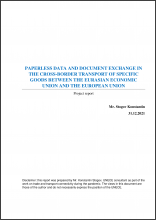
Paperless Data and Document Exchange in the Cross-Border Transport of Specific Goods between the Eurasian Economic Union and the European Union
In the context of the recovery from the COVID-19 pandemic and the general direction of building back better this project aims to develop and practically test paperless data and document exchange in the cross-border transport of specific goods between the Eurasian Economic Union and the European Union.
Focusing on a specific pilot case of multimodal delivery of goods author of this study conducted research and offered practical recommendations how to align used by different participants in the supply chain in their IT systems to the UN/CEFACT standards and Multimodal Transport Reference Data Model, allowing for a seamless exchange of electronic data and documents (B2B exchange), as well as developing electronic B2G documents for submission to regulatory authorities.
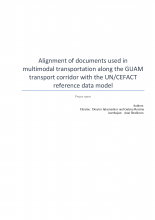
Alignment of documents used in multimodal transportation along the GUAM transport corridor with the UN/CEFACT reference data model
The objective of this project is further development of the digital transport documents that could provide seamless information flows accompanying cargo flows between countries along the GUAM transport corridor. Due to its position in the middle of the cargo transport routes between Europe and Asia, the use of UN/CEFACT standards and recommendations for cargo information sharing along this route makes much sense.
The focus of the project is on the practical application of the data models and standards to facilitate real-world transport operations that take place along this transport route. This is achieved by creating digital twins of real business documents that are mapped to the UN/CEFACT multimodal transport reference data model (MMT RDM) to ensure interoperability both in terms of changing jurisdictions and modes of transport along the route.
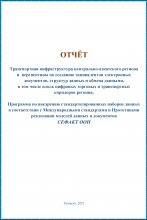
CA Transport Infrastructure and Perspectives on Development of Electronic Document Equivalents, Data Structures and Data Exchange
This Report serves as a preparation to the research of trade and transport corridors going though the Central Asia and establishes the necessity of digitalization of multimodal transport data as well as exchange of documents along those corridors through the use of UN & UN/CEFACT standards.
This Project is the joint initiative of the UNECE and the Ministry of Transport of the Republic of Uzbekistan.
The relevance of this project is the current common interest of all the countries in the region to jointly develop the transport links.
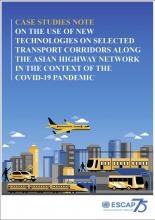
Seamless and smart connectivity along the Asian Highway network in the time of COVID-19
Freight transport operations poses the risks during the pandemics, especially if it is not fully computerized. As documents and goods continue to be subjected to physical checks for customs and other regulatory purposes, crew members and staff at border-crossing points and control terminals are exposed to the risk of contagion by the nature of their work. in this context, the use of information and communication technologies (ICT) and intelligent transport systems (ITS) is directly relevant to the pandemic response and recovery policies.Optimization of automation and digitalization can reduce the need for human interaction, making cross-borders transport safer and more resilient to disruptions. In this context, this technical note aims to offer policy recommendations for policy responses using new technologies and smart road solutions to preserve the regional transport connectivity in the time of the pandemics and other similar disruptions.
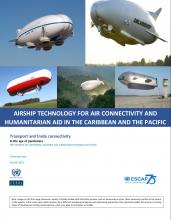
Airship technology for air connectivity and humanitarian aid in the Caribbean and the Pacific
The Hybrid Airship transport alternative has the potential to be a game changing technology with significant development in recent years. The aim of this technical note is to help raise awareness on airships as an innovative mobile services technology.
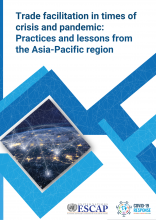
Trade facilitation in times of pandemic: practices and lessons from the Asia-Pacific region
The Coronavirus 2019 (COVID-19) pandemic has hit international trade worldwide and in Asia and the Pacific, underscoring the importance of maintaining trade connectivity not only for the immediate pandemic response, but also for the subsequent recovery efforts in order to build resilience to future disruptions. The report first describes, in the section II, the initial developments and lessons learnt in trade and transport facilitation practices in response to the COVID-19 pandemic. Section III presents the results of a Survey on trade facilitation in times of crisis and pandemic in the Asia and the Pacific region. Finally, Section IV discusses the ways forward for trade facilitation measures to support a sustainable and resilient recovery from the COVID-19 crisis and how the Asia-Pacific region can be better equipped to build back better.
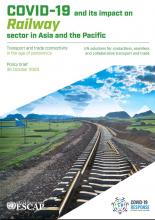
COVID-19 and its impact on railway sector in Asia and the Pacific
The policy brief explores challenges and opportunities for sustainable railway transport connectivity in the times of COVID-19 pandemic.
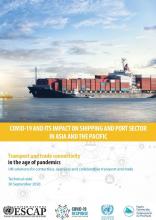
COVID-19 and its impact on shipping and port sector in Asia and the Pacific
The policy brief focuses on the impact of the pandemic on the shipping and port industry and the policy responses on COVID-19 in Asia-Pacific.